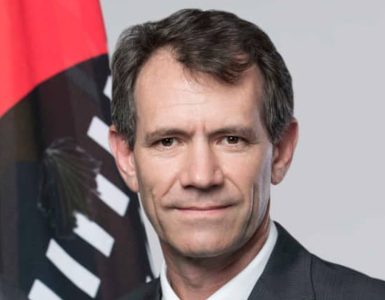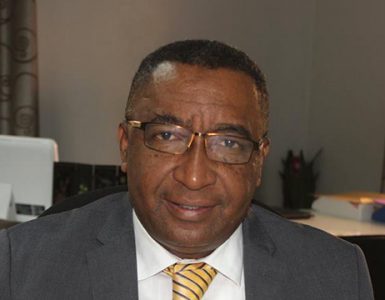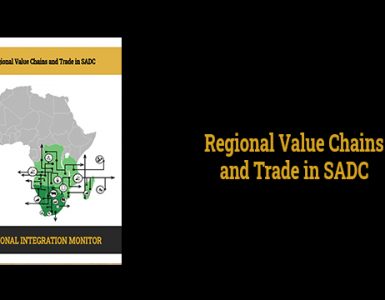Unequal land distribution remains one of the biggest challenges faced by most SADC countries, due to the colonial legacy of land dispossession which disenfranchised the native majority populations. This left most SADC economies and land in the ownership of small domestic elites and colonial settlers. In most cases, land was predominantly communally-owned and freely accessible to all members of the community administrated by traditional leaders and controlled by the chief[3]. During the colonial period land was dispossessed from Africans and reserved for colonial settlers who had supreme rights over the land and natural resources[4]. In the post-colonial period, unfortunately, at national and regional level, it seems that there has been no clear framework or policies and strategies to return land to the ownership of Africans, and to address the issue of unequal distribution of land.
Agriculture and other land-based means of production remain the primary livelihoods for most people in SADC, particularly rural citizens, and will continue to be so until the industrial and service sectors provide alternative opportunities for sustainable (rural) livelihoods[5]. Apart from supporting livelihoods, land reform also plays a vital role in rural transformation, because it can empower rural citizens to increase their productivity and improve their standards of living. SADC countries have adopted different approaches in response to the land question and resolving land reform challenges. Countries such as South Africa, Zimbabwe and Mozambique have all taken somewhat unique approaches to land administration and land reform. The three can be categorised as follows, in terms of land administration: South Africa predominantly provides for freehold and some communal land rights (mainly rural), whilst Zimbabwe provides a mixed system of freehold and leasehold land rights, and Mozambique is slowly transitioning from a predominantly leasehold system towards freehold land rights. So how do the different approaches to land reform affect rural transformation and facilitate improvement in the living conditions for people in the SADC region?
The SADC region is affected by the consequences of unjust colonial land policies, such as mass land dispossession from indigenous African people and legal dualism where, a minority of white people who owned a vast majority of arable land were more productive, while the majority of black people owned large unproductive communal lands were designated by colonial law[6]. Colonisation was essentially conquest of Africa for land and natural resources to support the expansion of European capitalism following the peak of the industrial revolution[7]. Destroying the pre-existing systems of land rights in Africa and replacing it with a capitalist-based land rights system was a major objective of colonial rule. Pre-colonial land rights were guided by customary law based on individual, family and clans or tribal claims on land[8]. However, colonial power dismissed the customary or communal claims to land replacing it with individual claims to land. This allowed colonial settlers to acquire the legal and moral rights to land, and provided them with a reason to forcibly expropriate land from African people given that none of the land was privately owned[9]. During colonialism, most of the land belonged to the colonial settlers and the indigenous people worked those lands to make profits for their settlers[10].
The battle for land by the indigenous people who suffer the injustice of past and present land expropriation and other forms of exclusion, has sparked political conflict across SADC[11]. Restitution of land to indigenous peoples has always been the solution to restore the dignity of indigenous Africans, building social cohesion and strengthening national unity. However, land reform has always been slow and treated with caution due to political, social and economic implications[12]. Conflict over land has been aggravated by land scarcity caused by high demand of new commodity markets such as phosphate mining, biofuel production or renewable energy; growing population; urbanisation; expansion of crop cultivation; land degradation and water scarcity[13]. These challenges have led to rising property prices and a concentration of ownership by certain groups of local elites, to the detriment of poor communities and vulnerable groups[14].
Colonialism and Land Reform: The Cases of South Africa, Zimbabwe and Mozambique
Despite the differences of approach to land reform, the central contention has been about how post-colonial governments can expropriate land from colonial white owners and reinstate it to the victims of colonial dispossession. The central issue here is justice, even though land reform has become increasingly justified through the economic rationale of dealing with inequality and empowering indigenous Africans.
In South Africa land reform has been confined by the 1996 constitution which acknowledges customary land rights and reinforces private property rights. This implied, that government should compensate current claimants through the mechanism of “willing buyer – willing seller” on a market-based approach, which contradicts the vision contained in the Constitution. Land reform and restitution have been very slow and achieved mixed results. For example, between 1994 and 2015, approximately 5.0 million hectares, averaging 238,000.0 hectares per year have been delivered under the land redistribution programme. To date, 72.0% of farms and freehold land is owned by whites, followed by coloured 15.0%, Indian 5%, and African 4.0% on the total of 37.0 million hectares[15].
In Zimbabwe, government plans at land restitution were overtaken by sporadic land grabs which resulted in the international sanctions and economic isolation of Zimbabwe[16]. Land invasion was spearheaded by war veterans and landless peasants. The ruling party ZANU-PF later endorsed and approved the land invasion through the so called “Fast Track Land Reform Programme (FTLRP)”. For example, 168,671 families received land, of which 145,775 were landless; families received small farms and 22,896 were black farmers who benefited from the FTLRP[17]. This scenario proved to be costly for the agricultural sector and the Zimbabwe economy as a whole, due to international sanctions and weakening of agricultural production[18]. The issue of land reform was exploited by the ZANU-PF government in order to gain populist support from Zimbabweans and war veterans, who were leading the country-wide attacks on white-owned commercial farms[19].
Meanwhile Mozambique passed a decree passing ownership of all land to the government and establishing a leasehold system of land administration, however, this is slowly being replaced by a freehold-based system in order to attract foreign investors to the country. After the end of the 17-year civil war in Mozambique in 1992, the government led by FRELIMO, initiated and adopted the 1997 Land Law, which aimed to protect the best interest of communities and facilitate investors’ access to land[20]. The policy aimed at increasing productive land to reduce poverty and support national development by fast-tracking private investment. However, the Mozambican state remains the sole owner of the land[21].
Current Land Reform: Bottlenecks, Rural Transformation and Distribution of Income
Land reform aims is to foster national development and prosperity through access to land and security of tenure for poorer citizens and victims of colonial land or state-led dispossession. In addition, land reform has increasingly been used to encourage investments in rural areas to enable rural transformation[22]. However, land reform progress has been slow and implementation has been poor, given the number targets which have not been achieved in order to address colonial injustices. Lack of adequate budget allocation for land reform, limited post-settlement support for the beneficiaries and smallholder farmers, and lack of technical support are the main stumbling blocks for SADC land reform[23]. Consequently, large-scale commercial farming remains mostly owned by colonial settlers who monopolised large tracts of fertile and productive land, sometimes benefiting from state subsidies, and maintaining their competitive advantage over indigenous smallholder farmers[24].
The unclear role and influence of customary land administration systems is another major obstacle of land reform. In many instances land is controlled by traditional authorities and distributed through customary practices, which disadvantages women in most cases, affecting livelihoods and the distribution of wealth, particularly in rural areas. These customary practices and their influence on land administration and distribution of land are often unresolved by current approaches to land reform. As a result, there are still many contradictions between national policies or formal legislation and customary law[25]. The role of women and their control over rural livelihoods and rural transformation remain undermined, by being subjected to discriminatory customary practices. In many instances, women can only gain access to land through the name of their spouses[26]. Regional policies and strategies at the SADC level have enabled programmes to build gender capacity and provide training to address these gender gaps[27]. The issue of race and class struggle also overshadows land reform. The concentration of land in minority groups or certain elites has led to the dominance of market-based land administration, without any progress in terms of land reform, which reinforces minority interests and undermines the livelihoods of poor and vulnerable people who depend on land. All these constraints have affected progress in land reform and rural transformation. Without equitable distribution of land, income continues to be unequally distributed whilst landlessness has the worst effect on poor and vulnerable people in the region.
The different land reform approaches have yielded very little in terms of addressing the issues of colonial land dispossession, rural transformation and economic development. Although limited, Mozambique seemed to have made some progress in terms of promoting land redistribution, agricultural development, and rural transformation. It has been estimated that over 1.0 million hectares have been acquired and leased to investors for farming activities[28]. Between 2004 and 2009, approximately 2.7 million hectares were leased to 405 projects[29]. The land deals from 2000 to 2014 covered about 2.4 million hectares in Mozambique. However, land cannot be privately owned or traded, and companies can only hold long- or short-term usage rights of the land[30]. Despite this, equitable redistribution of land among the population remains limited. However, the challenge with this approach is the significance of state control, which can serve narrow elite interests. This approach would require a strong state that is insulated from private interests, in order to bring positive policy change in terms of land possession.
SADC governments have been vocal and persistent in their quest for land reform. A number of different strategies have been undertaken with the aim of empowering indigenous people and victims of colonial land dispossession. Although indigenous people have received land, the bulk of land is in the hands of a few elites and minority colonial settlers. Increased pressure to attract foreign investors has also created a dual focus for governments, which has reinforced market-based approaches to policy-making. This has reduced the chance for poor and vulnerable people to access land. Racial discrimination, unemployment and poverty and inequality continue to prevail in SADC countries and these conditions are linked to the land reform failure. The lack of coherent policies between state government and traditional authorities undermines land reform. The incoherencies between government policies or formal legislation and customary law, undermine security of land tenure due to customary practices in land administration. This has resulted in rent-seeking behaviour, clientelism, and continued exclusion of the majority population from land ownership.
To improve progress towards land reform in the SADC region, governments need to increase efficiency and transparency in land administration, and improve security of tenure through supporting laws to formalise tenure rights for communal land. Improved security of tenure will enable rural citizens to use their land as collateral to access financing which will help to reduce poverty. SADC countries need to establish clear policies and institutional frameworks to implement coherent land polices at the regional and national level. The policies should not undermine the political and economic objectives at the country level, but also promote sustainable rural transformation and agricultural development by increasing competitiveness and encouraging specific value-chains in the region. However, no land will be productive without ensuring that rural citizens have the necessary business and technical skills to economically sustain their agricultural enterprises. It is one thing to empower citizens with land, but another to enable them with skills and capital to work that land.
By Serge Hadisi & Nomawethu Ndondo
[1] SADC 2012. Regional Indicative Strategic Development Plan, on the Southern African Development Community Website, viewed on 12 January 2018, from http://www.sadc.int/.
[2] SADC 2012. Regional Indicative Strategic Development Plan, ibid.
[3] UNECA 2003. Land Tenure Systems and Sustainable Development in Southern Africa, United Nations Economic Commission for Africa: Lusaka. Available At: http://repository.uneca.org/ [Last Accessed: 5 February 2018].
[4] UNECA 2003. Land Tenure Systems and Sustainable Development in Southern Africa, ibid.
[5] Moyo, S. 2007. The Land Question in Southern Africa: The Challenge of Transformation and Redistribution, R. Hall (ed.), Human Sciences Research Council Press: Cape Town. Available At: https://open.uct.ac.za/ [Last Accessed: 11 December 2017].
[6] Nkanyiso, S. 2010. Where Zimbabwe Got it Wrong – Lessons for South Africa: A Comparative Analysis of the Politics of Land Reform in Zimbabwe and South Africa, Stellenbosch University: Stellenbosch. Available At: https://scholar.sun.ac.za/ [Last Accessed: 15 April 2018]; Moyo, S. 2007. The Land Question in Southern Africa: The Challenge of Transformation and Redistribution, ibid.
[7] PESA 2017. Infrastructure Development and Financing in SADC, on the PESA Website, viewed on 18 April 2018, from https://politicaleconomy.org.za/.
[8] Smith, H. & Wicomb, W. 2014. Customary Law and the Protection of Community Rights to Resources, Legal Resources Centre: Johannesburg. Available At: http://accahumanrights.org/ [Last Accessed: 17 January 2014].
[9] Smith, H. & Wicomb, W. 2014. Customary Law and the Protection of Community Rights to Resources, ibid.
[10] Mashimbye, R. 2017. The Role of the Southern African Development Community in Conflict Resolution: The Case of Zimbabwe from 2002 to 2014, University of Pretoria: Pretoria. Available At: https://repository.up.ac.za/ [Last Accessed: 5 February 2018].
[11] Mashimbye, R. 2017. The Role of the Southern African Development Community in Conflict Resolution: The Case of Zimbabwe from 2002 to 2014, ibid.
[12] Mashimbye, R. 2017. The Role of the Southern African Development Community in Conflict Resolution: The Case of Zimbabwe from 2002 to 2014, ibid.
[13] Knight, R. S. 2010. Statutory Recognition of Customary Land Rights in Africa: An Investigation into Best Practices, Food and Agriculture Organisation: Rome. Available At: http://www.fao.org/ [Last Accessed: 17 January 2018]; UNECA 2003. Land Tenure Systems and Sustainable Development in Southern Africa, ibid.
[14] Knight, R. S. 2010. Statutory Recognition of Customary Land Rights in Africa: An Investigation into Best Practices, ibid.
[15] DRDLR 2017. Land Audit Report 2017, Department of Rural Development and Land Reform: Pretoria. Available At: http://www.ruraldevelopment.gov.za/ [Last accessed: 15 April 2018].
[16] Mutasa, C. 2015. A Brief History of Land in Zimbabwe: 1890-Today, on the Focus on Land in Africa Website, viewed on15 April 2018, from http://www.focusonland.com/; Nkanyiso, S. 2010. Where Zimbabwe Got it Wrong – Lessons for South Africa: A Comparative Analysis of the Politics of Land Reform in Zimbabwe and South Africa, ibid.
[17] Mutasa, C. 2015. A Brief History of Land in Zimbabwe: 1890-Today, ibid.; AC 2014. Did 300,000 Families Benefit from Zimbabwe’s Post-1999 Land Reforms? Official Data Says No, on the Africa Check Website, viewed on 15 April 2018, from https://africacheck.org/; Moyo, S. 2011. ‘Three Decades of Agrarian Reform in Zimbabwe’, Journal of Peasant Studies, Vol. 38, No. 3, pp.: 493-531. Available At: https://doi.org/ [Last Accessed: 15 April 2018].
[18] Moyo, S. 2007. The Land Question in Southern Africa: The Challenge of Transformation and Redistribution, ibid.
[19] Mashimbye, R. 2017. The Role of the Southern African Development Community in Conflict Resolution: The Case of Zimbabwe from 2002 to 2014, ibid.
[20] Kleinbooi, K. 2010. Review of Land Reform in Southern Africa, University of the Western Cape: Cape Town. Available At: http://repository.uwc.ac.za/ [Last Accessed: 11 December 2017]; LANDac 2012. Uganda: Food Security and Land Governance Factsheet, Netherlands Land Academy: Utrecht. Available At: http://www.landgovernance.org/ [Last Accessed: 15 April 2018].
[21] Kleinbooi, K. 2010. Review of Land Reform in Southern Africa, ibid.; WB 2008. Land Reform in Mozambique, World Bank: Washington, D. C. Available At: https://siteresources.worldbank.org/ [Last Accessed: 11 December 2018]; Norfolk, S. and Liversage, H. 2002. Land Reform and Poverty Alleviation in Mozambique, Southern African Regional Poverty Network. Available At: https://sarpn.org/ [Last Accessed: 5 February 2018].
[22] Kleinbooi, K. 2010. Review of Land Reform in Southern Africa, ibid.; Knight, R. S. 2010. Statutory Recognition of Customary Land Rights in Africa: An Investigation into Best Practices, ibid.
[23] Kleinbooi, K. 2010. Review of Land Reform in Southern Africa, ibid.; Knight, R. S. 2010. Statutory Recognition of Customary Land Rights in Africa: An Investigation into Best Practices, ibid.; Moyo, S. 2007. The Land Question in Southern Africa: The Challenge of Transformation and Redistribution, ibid.; Hall, R & Kepe, T. 2017. ‘Elite Capture and State Neglect: New Evidence on South Africa’s Land Reform’, Review of African Political Economy, Vol. 44, Issue 151, pp.: 122-130. Available At: http://dx.doi.org/ [Last Accessed: 15 April 2018].
[24] Hall, R & Kepe, T. 2017. ‘Elite Capture and State Neglect: New Evidence on South Africa’s Land Reform’, ibid.
[25] Knight, R. S. 2010. Statutory Recognition of Customary Land Rights in Africa: An Investigation into Best Practices, ibid.; Smith, H. & Wicomb, W. 2014. Customary Law and the Protection of Community Rights to Resources, ibid.; Kleinbooi, K. 2010. Review of Land Reform in Southern Africa, ibid.
[26] Knight, R. S. 2010. Statutory Recognition of Customary Land Rights in Africa: An Investigation into Best Practices, ibid.; Smith, H. & Wicomb, W. 2014. Customary Law and the Protection of Community Rights to Resources, ibid.; Kleinbooi, K. 2010. Review of Land Reform in Southern Africa, ibid.
[27] SADC 2012. Regional Indicative Strategic Development Plan, ibid.
[28] Glover, S., Salvucci, V., & Jones, S. 2016. Where is Commercial Farming Expanding in Mozambique?, United Nations World Institute for Development Economics Research: Washington, D. C. Available At: https://www.wider.unu.edu/ [Last Accessed: 15 April 2018].
[29] Glover, S., Salvucci, V., & Jones, S. 2016. Where is Commercial Farming Expanding in Mozambique?, ibid.
[30] Glover, S., Salvucci, V., & Jones, S. 2016. Where is Commercial Farming Expanding in Mozambique?, ibid.





























